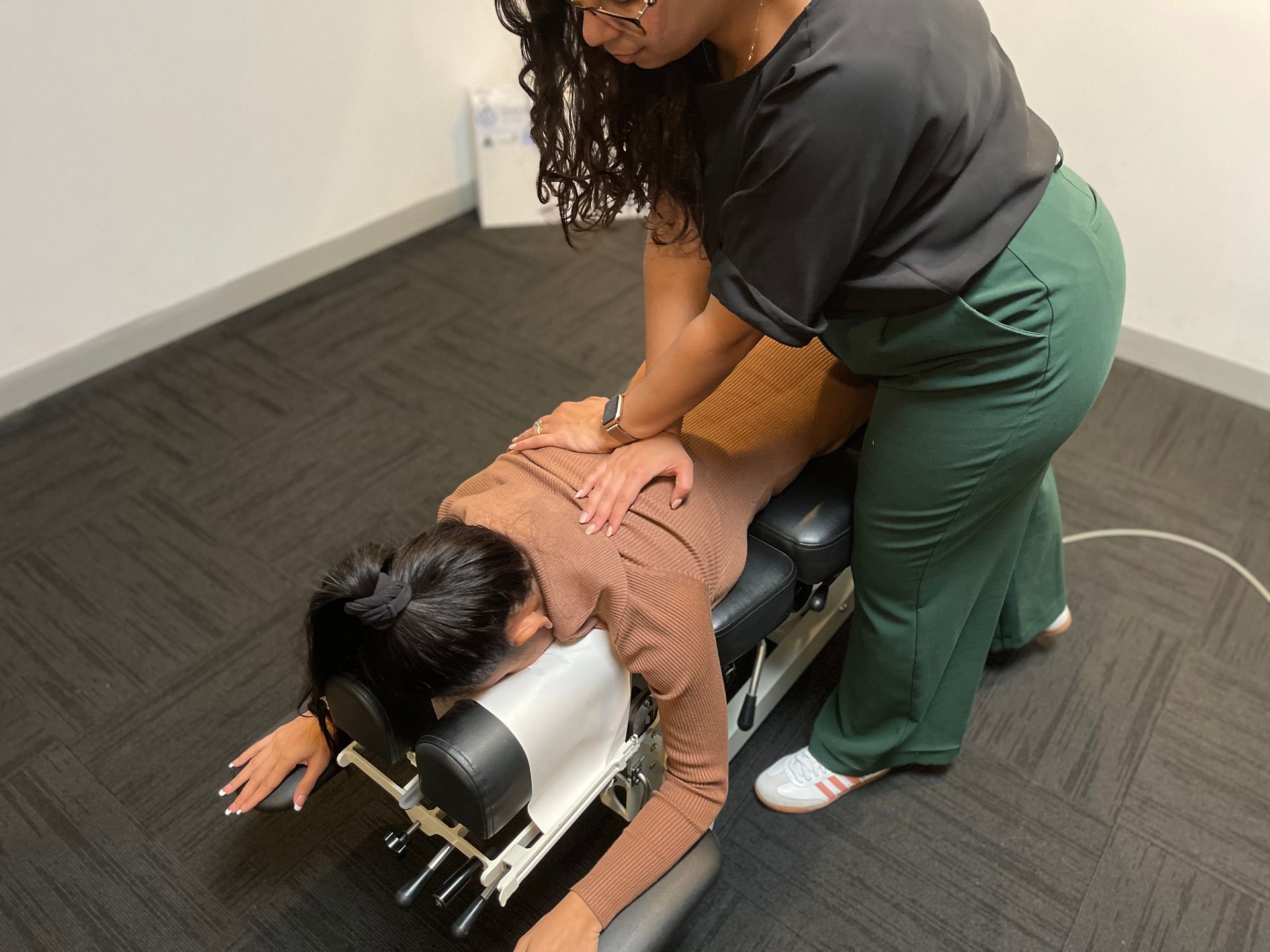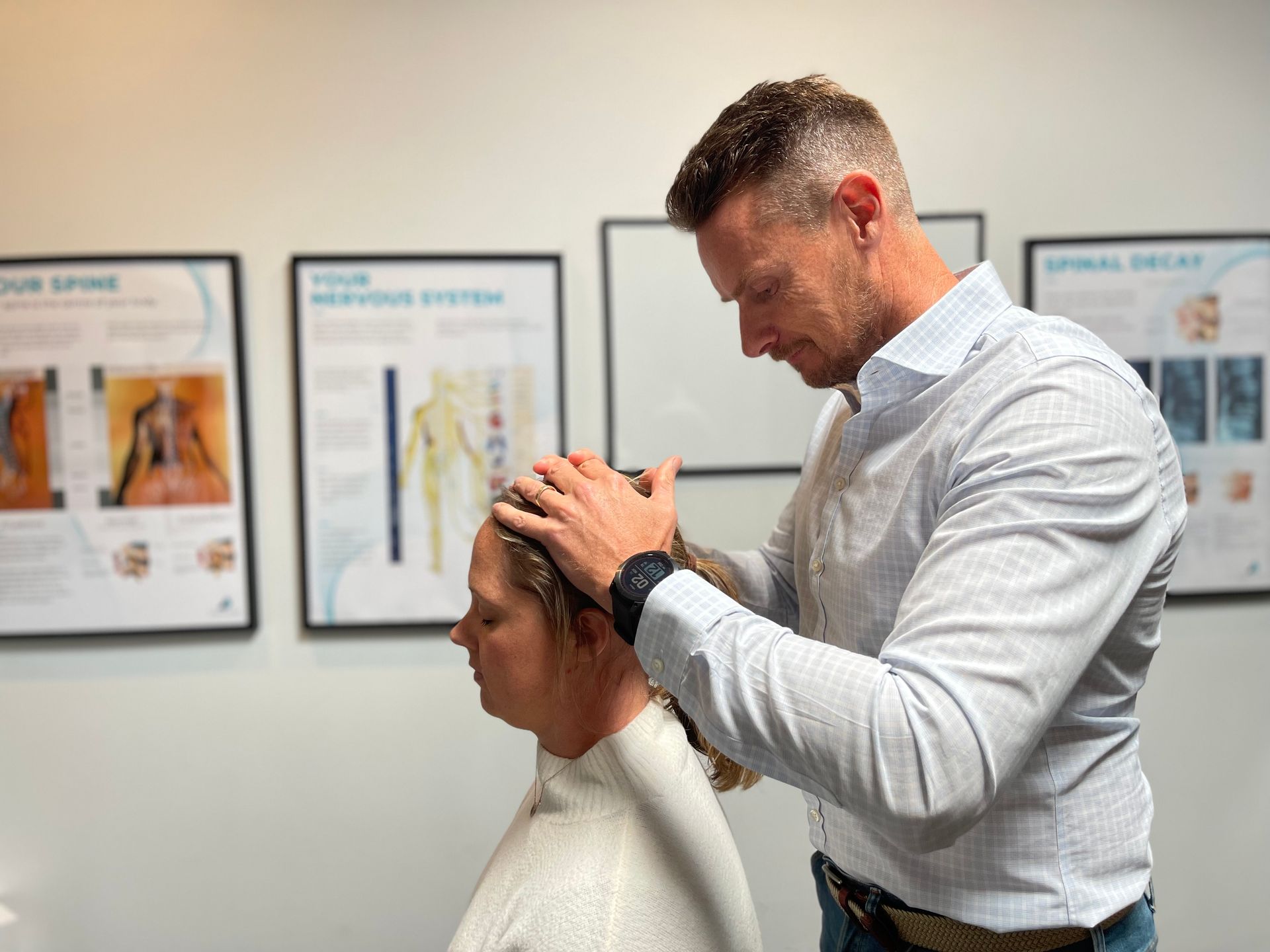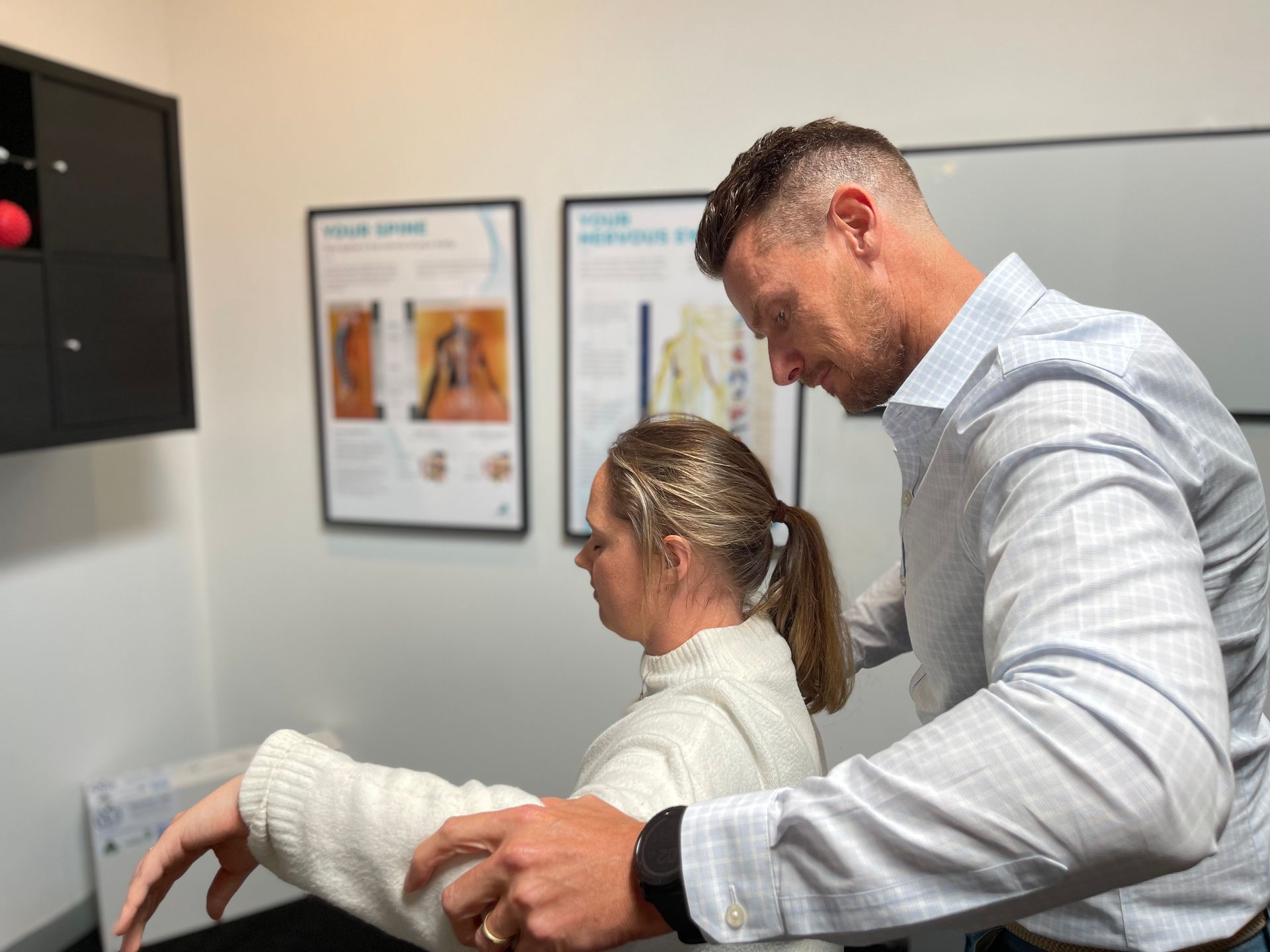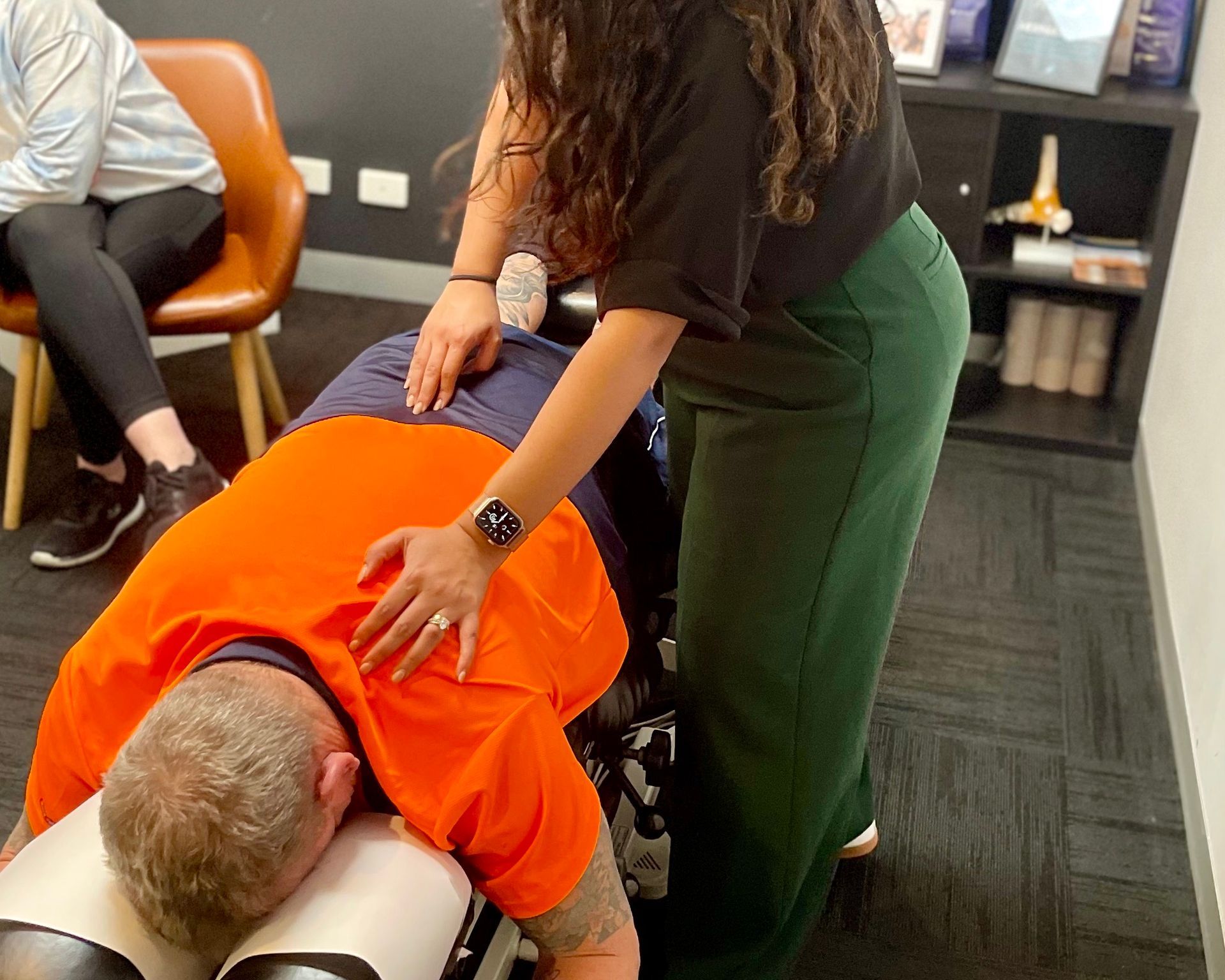What Are The Disadvantages Of Going To A Chiropractor
As a curious person interested in alternative healthcare, I've wondered about chiropractors' drawbacks. Chiropractic treatment is becoming more popular, but it's important to consider its risks and safety. This article will discuss why some people find chiropractic treatment ineffective or even dangerous for certain conditions and offer alternative treatments.
One should not overlook some chiropractic treatment risks. Chiropractic care focuses on the musculoskeletal system, which can lead to the misdiagnosis of other health issues. Many people seek chiropractic care for neck injuries and low back pain, but research suggests limited efficacy. This makes us wonder if there are better, more comprehensive health solutions.
Let's examine what are the disadvantages of going to a chiropractor and consider alternative treatments that may offer new wellness approaches.
Chiropractic Treatment Overview
Let me explain chiropractic treatment if you're considering it.
Chiropractic care adjusts spinal misalignments to improve health. Over time, chiropractic treatment has become popular for back pain, headaches, and other conditions. There is little research on chiropractic treatment's efficacy for various health conditions. Some people see improvements after chiropractic care, but others may see worsening symptoms. Realistic expectations and the fact that results vary are essential.
Chiropractic adjustments, like any medical intervention, may have side effects. A session may cause temporary soreness or discomfort. Serious complications like herniated discs or nerve damage are rare. Before treatment, discuss your medical history and concerns with your chiropractor.
Potential Risks

Consider the risks of chiropractic care. Chiropractic treatment can help with some conditions, but it has drawbacks.
The lack of scientific evidence for many chiropractic techniques is concerning. Chiropractic practices often lack rigorous research and clinical trials, unlike traditional medicine. There may be little evidence of their efficacy and safety.
Injury is another drawback of chiropractic care. Chiropractors manually adjust the spine and other body parts. Chiropractors perform adjustments to improve alignment and relieve pain, but these adjustments can also cause muscle strain or nerve damage. If a chiropractor fails to diagnose an underlying condition before making adjustments, it may worsen or delay treatment.
Chiropractic care can also be expensive. Some insurance plans may not cover chiropractic treatments. This means that patients may have to pay for each session, which can add up quickly. Multiple sessions are often necessary for optimal results, which can result in high costs.
Chiropractic care has pros and cons. The lack of scientific evidence for many methods raises safety and effectiveness concerns. Consider the risk of injury during manual adjustments. Finally, paying for each session out-of-pocket adds to the drawbacks of this treatment. Understand these drawbacks to make informed healthcare decisions.
Safety Concerns
Stay informed about chiropractic safety to protect your health. Many people find relief from their symptoms through chiropractic treatment, but there are risks and drawbacks.
Safety concerns include spinal manipulation injuries. Aggressive adjustments have caused strokes and nerve damage in rare cases.
The lack of chiropractic regulation raises safety concerns. Chiropractic education and qualifications vary, unlike medical doctors, who must undergo rigorous training and licensure. All practitioners may not have the knowledge or skills to provide safe and effective treatments.
Additionally, some people with pre-existing conditions or health issues cannot receive chiropractic care and may require more specialized treatment.
There are benefits to seeing a chiropractor for certain conditions, but there are also risks. Be aware of chiropractor safety concerns and consult with doctors before treatment. With limited evidence supporting its effectiveness for various medical conditions, it's important to consider other options and approaches for your overall well-being without unnecessary risks.
Limited Evidence

It is necessary to critically assess the efficacy of chiropractic care for various medical conditions, despite the lack of evidence. Many people swear by chiropractic treatments to relieve pain and improve health, but the evidence is weak.
Limited chiropractic research and studies should raise concerns for four reasons:
- Inconsistent results: One of the main challenges with evaluating the effectiveness of chiropractic treatments is the lack of consistent results across different studies. Some studies show positive outcomes, while others show no significant improvement or even negative effects. This inconsistency raises questions about the reliability and generalizability of chiropractic care.
- Small sample sizes: Another limitation in researching chiropractic care is often small sample sizes in clinical trials. With a small number of participants, it becomes difficult to draw meaningful conclusions about the effectiveness or safety of spinal manipulations performed by chiropractors. Larger-scale studies are needed to provide more robust evidence.
- Lack of control groups: Many studies examining chiropractic treatments do not include control groups, which makes it challenging to determine if any observed improvements are due to specific interventions or simply natural healing processes over time. Without proper control groups, it becomes challenging to attribute any benefits solely to chiropractic care.
- Publication bias: Limited research on chiropractic care may also be influenced by publication bias – a tendency for positive results to be published more frequently than negative or inconclusive findings. This bias can give an inaccurate impression that there is stronger evidence supporting the efficacy of spinal manipulations than what actually exists.
Given these limitations and shortcomings in chiropractic research, it's important to approach its effectiveness with caution and skepticism, especially for complex medical conditions or severe injuries. Before accepting it as a cure-all, we should investigate this field further due to the limited evidence.
Ineffective For Certain Conditions
Chiropractic care may not help certain conditions. Chiropractors treat many health conditions, but sometimes other treatments are better. Let us discover more on what are the disadvantages of going to a chiropractor.
Remember that chiropractic treatment's efficacy depends on the patient and their condition. If you have cancer or heart disease, chiropractic care alone may not help. These conditions require specialized medical interventions and treatments from specialists. Such cases require consultation with your primary care provider to determine treatment options.
Herniated discs and degenerative disc disease may not respond to chiropractic treatment, according to some studies. Chiropractors can relieve pain and improve mobility with spinal adjustments, but not everyone benefits. If chiropractic treatment doesn't work, consider alternative therapies or more medical opinions.
Chiropractic care can help many people with various health issues, but not always. If you have cancer or serious musculoskeletal issues, you should consider other treatment options.
Possible Adverse Reactions

Remember to consider the side effects when considering chiropractic care. Chiropractic adjustments, particularly neck manipulation, may relieve chronic pain in some people, but there are risks. After spinal manipulation, adverse reactions can range from mild discomfort to serious complications.
The treated area may be sore or stiff after chiropractic care. This side effect is common and usually goes away in two days. Soreness may persist or worsen, causing ongoing discomfort. You must inform your chiropractor of any unusual or prolonged symptoms so they can adjust their treatment plan.
Chiropractic adjustments can cause serious side effects in rare cases. Herniated discs, nerve damage, and strokes are examples. Although rare, such events demonstrate the importance of choosing a qualified and experienced chiropractor who follows proper protocols and safety measures during treatment.
When considering chiropractic care for chronic pain or other conditions, weigh the benefits against the risks. You can decide if chiropractic treatments are right for you by talking to your primary care provider.
Lack Of Regulation
The lack of regulation in chiropractic care puts your safety at risk and increases the risk of side effects. Some argue that chiropractors treat certain conditions effectively, but the lack of standardized regulations raises questions about their qualifications and expertise.
Chiropractors' education and experience vary, unlike doctors' rigorous training and strict standards. Lack of oversight can put patients at risk of poor care or harm.
Lack of regulation in chiropractic care causes quality inconsistency among practitioners. Without standards, it's hard to assess a chiropractor's skills and knowledge. Variability can cause improper techniques that produce inconsistent results and worsen conditions. To reduce these risks, chiropractic patients must thoroughly research their practitioner's credentials, experience, and patient reviews.
Furthermore, the profession lacks accountability without adequate regulation. Patients have few options for legal action or reporting malpractice if a chiropractic treatment goes wrong. This lack of oversight endangers patients and hinders field efforts to improve patient safety. Providing consistent, high-quality care is difficult without clear guidelines and consequences for malpractice or ethical violations.
Chiropractors use different treatment protocols and techniques because there is no regulation. Patients who seek multiple opinions or switch providers may receive conflicting advice or therapies that are not contextually relevant to their condition, causing confusion. Without a unified approach, patients may struggle to navigate their healthcare.
Lack of regulation in chiropractic care has many drawbacks that put your safety at risk. Concerns include inconsistent practitioner quality, limited accountability, and no standardized treatment protocols. These issues emphasize the importance of thoroughly researching and vetting chiropractors before hiring them.
Misdiagnosis Risks

Ineffective treatment and delays in addressing your health concerns can result from chiropractic misdiagnosis. When seeing a chiropractor, know that they may not have the same diagnostic training as doctors.
While they can detect subluxations and spinal misalignments, they may struggle to diagnose other conditions. This can be a major drawback if you have complex or chronic health issues that require a more thorough evaluation.
Lack of regulation in chiropractic care contributes to misdiagnosis. Chiropractors have fewer regulations than doctors, who must study and be licensed. This means you may encounter practitioners with different skills and knowledge. Without standardized diagnosis guidelines, some chiropractors may make assumptions or generalizations instead of conducting thorough examinations or ordering appropriate tests.
The nature of chiropractic techniques also increases the risk of misdiagnosis. Spinal adjustments are chiropractors' main treatment for pain and wellness. These adjustments may help some musculoskeletal conditions, but they may not address other causes. If your symptoms are caused by an infection or organ dysfunction, chiropractic care alone may delay treatment.
While chiropractic misdiagnosis can pose risks, not everyone will experience them. Some people benefit from regular chiropractic visits for maintenance and minor ailments. If you have complex health issues or persistent symptoms that don't improve with chiropractic care, you should see a doctor for a full evaluation.
Ineffectiveness For Neck Injuries
Contrary to popular belief, chiropractic care may not help neck injuries. Many people seek relief from neck pain or injuries from chiropractors, but this treatment may not always work. Here are three reasons chiropractic care may not help neck injuries:
- Lack of scientific evidence: Despite its widespread popularity, there's limited scientific evidence supporting the effectiveness of chiropractic care for neck injuries. Many studies have shown inconclusive or mixed results when it comes to relieving neck pain through spinal adjustments performed by chiropractors. This lack of solid evidence raises doubts about the effectiveness of chiropractic treatments specifically targeted towards neck injuries.
- Potential risks and complications: Chiropractic manipulations on the neck carry inherent risks, including the possibility of stroke or worsening of an existing condition. Neck adjustments can put pressure on blood vessels in the surrounding area, leading to a tear or blockage that restricts blood flow to the brain. While these complications are rare, they highlight the importance of considering alternative treatment options for neck injuries.
- Limited scope of practice: Chiropractors primarily focus on treating musculoskeletal conditions through manual manipulation techniques. However, when it comes to more serious neck injuries involving fractures, herniated discs, or nerve damage, a chiropractor's expertise may be insufficient. In such cases, seeking medical advice from a specialist like an orthopedic surgeon or a neurologist would be more appropriate and effective.
Chiropractic care may help with some neck injuries, but it's important to understand its drawbacks before using it. People with serious or complex neck injuries should consider other treatments beyond chiropractic care due to the lack of scientific evidence, risks, and scope.
Less Effective For Low Back Pain

Consider chiropractic care's limited efficacy in treating low back pain. Chiropractic therapy is popular for treating many conditions, but its efficacy in treating low back pain is questionable.
While some patients may experience temporary relief, studies show that long-term benefits are often minimal or nonexistent. This disadvantages those who only use chiropractic for back pain.
Chiropractic care emphasizes spine alignment and joint manipulation to improve health. However, this approach may not work for low back pain. Back pain can have many causes, from muscle strain to herniated discs or degenerative conditions. Chiropractic adjustments alone may not solve these underlying issues, limiting their long-term relief.
Chiropractic care also requires frequent, long-term visits. Chronic low-back pain sufferers may find this time-consuming and costly. Many people may wonder if chiropractic care is the best way to treat their condition due to its limited efficacy and high cost.
Given the limitations of chiropractic care for low back pain, alternative treatments are necessary. Today, there are many innovative ways to manage chronic low back pain, from physical therapy and acupuncture to exercise programs and medically supervised medication management. People can make informed health decisions without relying on one method by considering these alternatives alongside chiropractic care.
Other Treatments Alternative Treatment Options
Let's look at some better low-back pain treatments. Consider other pain treatments when considering the drawbacks of chiropractic care.
Chiropractic adjustments may not provide long-term relief, but other methods have shown promise.
Physical therapy is another option. Physical therapy strengthens spine-related muscles and improves flexibility. Physical therapists use targeted exercises and stretches to relieve back pain and improve function. They teach proper body mechanics and posture to prevent injuries. Another option is acupuncture. Thin needles are inserted into specific body points to promote healing and relieve pain in this ancient Chinese practice. Acupuncture helps many people manage low back pain without the risks of chiropractic adjustments.
Finally, massage is a good low-back pain alternative. Massage therapists use deep tissue and Swedish massage to relax muscles. This can relieve muscle tension and knots.
When considering the drawbacks of chiropractic treatment for low back pain, consider other options that may work better. Alternative treatments like physical therapy, acupuncture, and massage have helped with low back pain. These alternatives may relieve pain without the risks of chiropractic adjustments.
Final Thoughts
In conclusion, chiropractors may have drawbacks. Chiropractic treatment can relieve some conditions, but it also has risks and safety concerns. The lack of evidence for its efficacy casts doubt on its value.
Misdiagnosis is a major drawback. Chiropractors specialize in the musculoskeletal system, so they may struggle to diagnose other medical conditions. Delays or errors in treatment may worsen the issue.
Chiropractic care may not work for all injuries or conditions. It is less effective than other treatments for neck injuries and low back pain. Consider alternative therapies and talk to other doctors before trying chiropractic.
Chiropractic care helps many people, but it's important to consider the risks and drawbacks before starting. You can get comprehensive and effective care for your condition or injury by consulting with multiple doctors and considering alternative treatments. So now you already know what are the disadvantages of going to a chiropractor.
Frequently Asked Questions
Are There Any Potential Risks Or Side Effects Associated With Chiropractic Treatment?
Chiropractic treatment has risks and side effects. Chiropractors manually manipulate the spine and joints to relieve pain and improve mobility. However, injury is possible. These injuries can cause anything from mild pain to herniated discs or nerve damage.
Chiropractic treatments may also cause headaches, fatigue, and soreness. While chiropractic treatment helps many people, it's best to consult a doctor before trying any alternative therapies, especially if you have pre-existing health conditions or are taking medications.
Is Chiropractic Treatment Safe For Everyone, Including Pregnant Women And Children?
Most people, including pregnant women and children, can safely receive chiropractic care. Before getting chiropractic care, especially for pregnant women or young children, consult a doctor.
Chiropractors can relieve back pain and headaches, but spinal manipulations carry risks. Muscle strains, nerve damage, and rare strokes are among these risks.
To reduce risks, choose a qualified and experienced chiropractor who understands pregnant women's and children's needs. Chiropractic treatment can be safe and effective for many people seeking natural health solutions when done by a skilled practitioner following proper guidelines.
Is There Any Scientific Evidence To Support The Effectiveness Of Chiropractic Treatment?
Scientific evidence supports chiropractic treatment. According to numerous studies, chiropractic care effectively treats back, neck, and headache pain.
Chronic low back pain patients improved with chiropractic adjustments, according to a Journal of Manipulative and Physiological Therapeutics study.
A study in the Annals of Internal Medicine found that spinal manipulation therapy relieved acute low back pain as well as medication.
These findings show that chiropractic treatment can help with musculoskeletal issues.
Are There Any Regulations Or Standards In Place To Ensure The Quality And Safety Of Chiropractic Care?
Regulatory bodies ensure quality and safety in chiropractic care. Chiropractic doctors must complete a rigorous Doctor of Chiropractic program before practicing.
They must also pass national exams to get a license from the state regulatory board. These regulations ensure chiropractors have the knowledge and skills to provide safe and effective care.
The American Chiropractic Association also sets ethical standards for chiropractors. These chiropractic medicine regulations and standards protect patients and promote quality care.
Are There Alternative Treatment Options Available For Specific Conditions That May Be More Effective Than Chiropractic Treatment?
Alternative treatments may work better than chiropractic for certain conditions. As someone who values innovation and seeks the best solutions, I've found many innovative therapies. For certain conditions, physical therapy, acupuncture, and osteopathy can be effective.
These alternatives often treat both symptoms and causes holistically. These cutting-edge options offer new ways to achieve optimal health and well-being.
